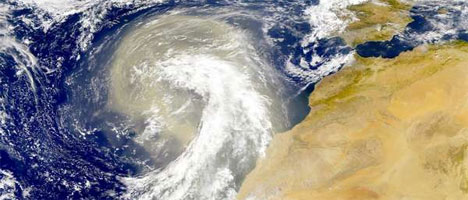Long-range Transport

Contacts, for more information:
The lifetime of air pollutants in the troposphere ranges from minutes to hours at the surface, and days to weeks in the free troposphere. Therefore, natural as well as human-induced emissions can influence atmospheric composition on local, regional, and even hemispheric scales. Weather events that influence chemical formation and transport pathways can vary according to climate variability and change. “Good” ozone from the stratosphere can be transported down into the troposphere, even raising “bad” ozone levels in surface air.
GFDL Research
GFDL’s global chemistry-climate models, in combination with various observations, help us to explore interactions among emissions, chemical transformations, long-range transport, and climate. Advancing this knowledge is crucial for designing effective international air pollution control strategies, as well as for assessing the impacts of climate variability and climate change on atmospheric composition.
We seek to understand how variability and trends in emissions and atmospheric circulation affect intercontinental transport of anthropogenic pollution and stratosphere-to-troposphere transport of ozone. We combine sophisticated chemistry-climate models with satellite and in situ observations to understand factors controlling the long-range transport of gas-phase and aerosol (particle) pollutants and the resulting impacts on climate. The influence of long-range transport is compared with that of locally- or regionally-generated pollution. In addition, our scientists aim to understand how historical and future climate variability and climate change will affect the long-range transport and distributions of pollutants.
Research Highlights





